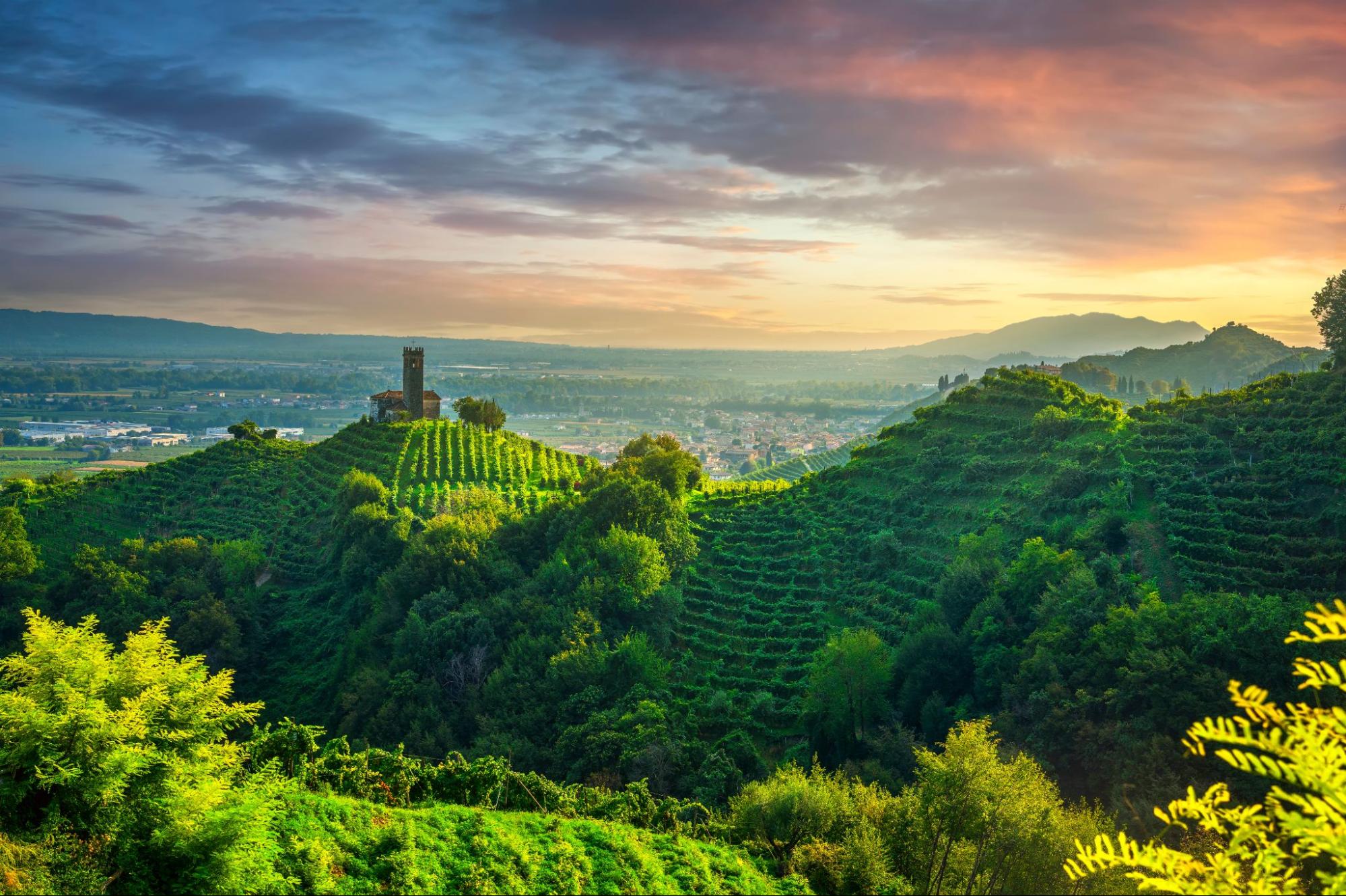- Wine Color/Type
- Top Occasions
- Unique Wines
- Surprise Me!
The Uncertain World of Upscale Prosecco
The future of Prosecco in 2024
Prosecco, Italy's cherished sparkling wine, has long been celebrated for its effervescent charm and tradition-steeped heritage. Yet, recent years have seen this sparkling mainstay venture into uncharted territories, weaving a narrative of both fascination and concern among wine enthusiasts and producers.
The prestigious hills of the UNESCO protected heritage sites of the Cartizze DOCG. (Photo: stevanzz/stock.adobe.com)
This exploration delves into the heart of these changes, shedding light on their impact on the Prosecco landscape.
Prosecco's Storied Past and Contemporary Shifts
The Glera grape, the cornerstone of Prosecco, has been the pride of Northeastern Italy for centuries. Known historically as Prosecco, a strategic rebranding in 2009 renamed the grape to Glera, mirroring the protective naming strategy employed by Champagne.
This period marked a significant elevation of Prosecco's status from IGT to DOC, with some zones like Prosecco di Conegliano e Valdobbiadine achieving the prestigious DOCG classification. These designations act as quality markers, guiding consumers from the approachable DOC to the elite DOCG wines, each reflective of the region's commitment to winemaking excellence.
A Controversial Leap
2020 heralded a bold new chapter in Prosecco's story with the introduction of Prosecco Rosé. By blending Glera with on-skin fermented Pinot Nero, producers crafted a pink variant that has ignited both trends and debates. While proponents some producers see it as a strategic expansion and a nod to global trends, others, particularly traditionalists from the Conegliano Valdobbiadene region, voice concerns over straying from Prosecco's winemaking roots.
The introduction of Prosecco Rosé has been a game-changer, contributing significantly to the Prosecco market. Accounting for approximately one-fifth of its total sales, this innovative variant has not only captured the market's attention but also assured quality through stringent selection criteria. Prosecco Rosé's success can be attributed to its exclusive use of vintage wines, ensuring each bottle meets high standards.
Additionally, its characteristically dry profile and adherence to DOC quality regulations have further solidified its standing in the wine world.
Tank-Method or Traditional Method?
The use of the Metodo Classico (Traditional-Method) has sparked a lively debate within the Prosecco community. The traditional Martinotti-Charmat (Tank-Method) method, synonymous with Prosecco production, is challenged by advocates of the Metodo Classico. While purists argue for the preservation of the Charmat method, crucial for maintaining Glera's distinct fruit-forward profile, others propose that embracing alternative methods could enrich Prosecco's diversity and appeal.
Does single-vineyard Prosecco exist?
Of course! In recent years, Prosecco producers, particularly in DOCG regions, have been pushing the envelope with single-vineyard and aged varieties. These variations aim to showcase specific terroirs and sophisticated aging techniques, enhancing Prosecco's complexity and stature. The Rive, or specific territorial selections based on unique soil and climate conditions, are gaining traction, indicating a shift towards more individualized and nuanced expressions of Prosecco.
How is Prosecco changing?
Prosecco's journey through these changes echoes the adaptability seen in versatile artists, who seamlessly transitioned across music genres without compromising their essence. Prosecco, in a similar vein, might achieve a harmonious balance between its historic roots and modern innovations. Brands are already experimenting with organic grapes, rosé variations, and even exploring non-alcoholic and low-calorie sparkling wines.
As Prosecco navigates this transformative era, it stands at a crossroads of preserving its time-honored identity while embracing emerging trends and tastes. The outcome of this evolution is still unfolding, but the journey promises to be as vibrant and spirited as the wine itself. In this dynamic phase, Prosecco continues to captivate and charm the wine lovers.
Peter Douglas
Latest articles

